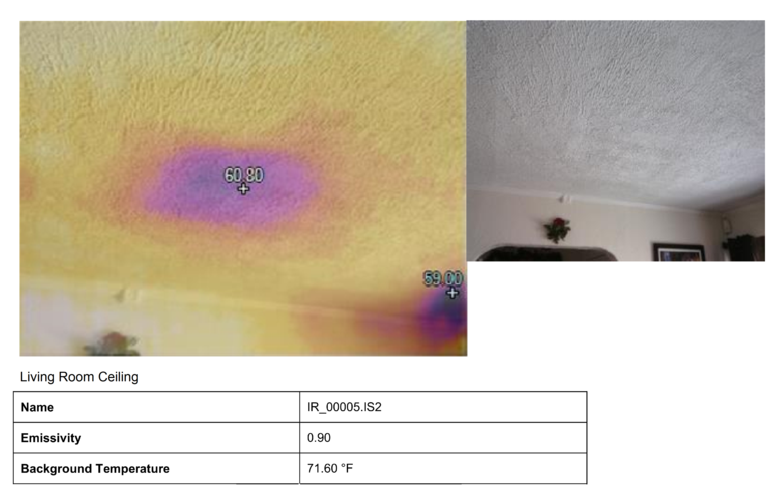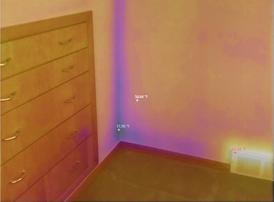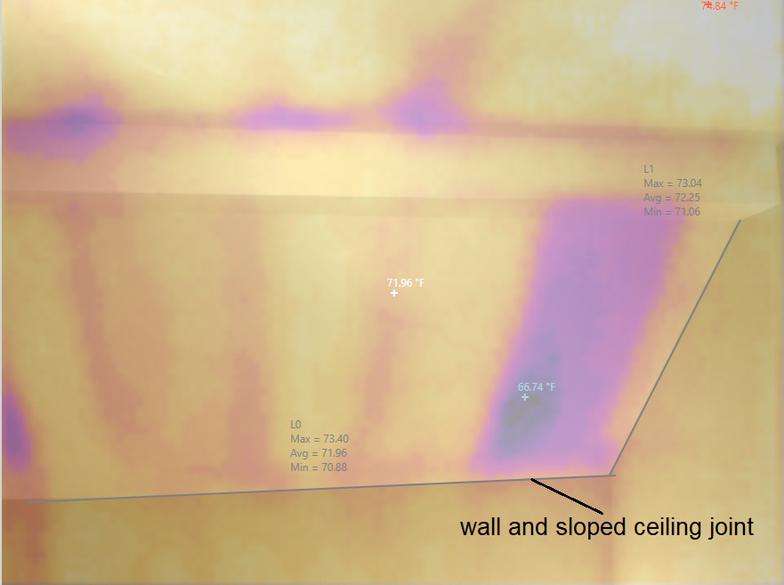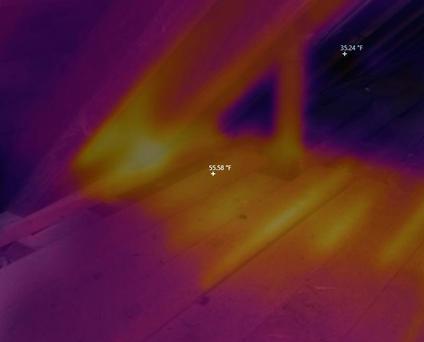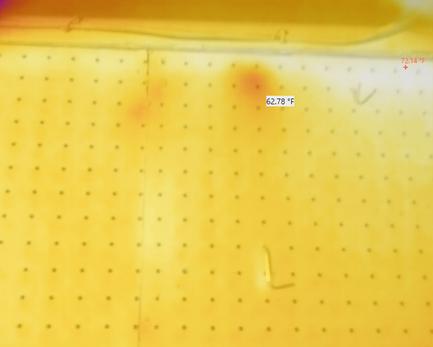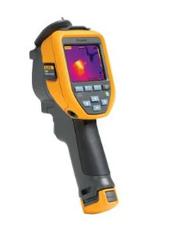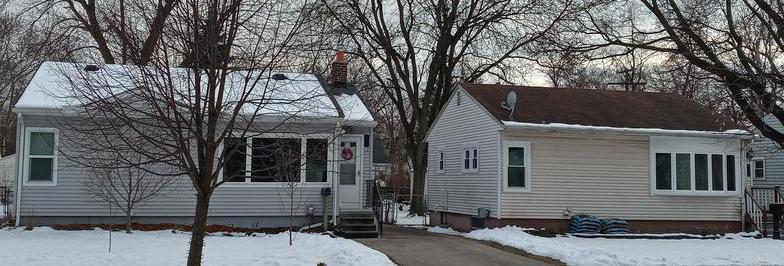Infra Red Thermography Survey: Finding Hidden Moisture and Other Problems
Infrared (I.R.) thermography survey give building inspectors another important tool in assessing mold and moisture intrusion and other hidden problems. IR surveys is a non-contact method that helps narrow searches for moisture or cold spots by remotely sensing temperature differences. The IR camera has a sensitive optical sensor that enables the distinguishing subtle differences in temperature evident in the infrared radiation spectrum. The primary situations where this is useful in the building health sciences profession includes:
- Detection of cold air or water infiltration
- Detection of moisture due to leaking pipes
- Detecting moisture due to condensation
- Detection of moisture due to flooding or similar events
- Visualizing certain elements such as piping, vents, structures or thermal conduits inside a wall
- Detection of areas of heat loss on the outside of a building
- Measuring the surface temperature of a building component and comparing it to the dewpoint
What Does Infra Red Thermography Do?
For this project, a cold spot was found on a living room ceiling where it appears insulation was missing. The temperature was similar to the nearby exterior wall. IR cameras also capture conventional photographs as part of the image file, which can be used to enhance the report. In this instance, the photograph corresponds to a slight indentation in the ceiling that appears to be a ceiling repair
Mold and Moisture Intrusion Investigations
The following are some examples of how infra-red camera survey is utilized in support of mold and moisture investigations:
Finding leaks and mold behind surface finishes in finished basements are among the most difficult indoor environmental challenges to address. Unfortunately in many cases the cavity (thermal break) between the surface finish and the basement foundation prevents "seeing problems inside the walls." In such situations, cold spots are typically only shown when significant leakage is present that would be evident by visual inspection. However, when the surface finish is directly adhered to the foundation, it may be possible to discern wet spots. The above shot shows a small cold spot near the top of pegboard affixed to the wall that could represent a leaking rod hole. This was described to the client as a potential leak area as it is possible to be an interference from a metal fastener or similar object on the wall or on the back of the pegboard.
Potential foundation leaking rod hole
Assessing attic mold
Mold in attics is typically attributed to excessive moisture, which can be attributed to improper venting into the attic, insufficient ventilation or improper insulation. The above shot shows a hot spot in an attic below floorboards in an attic where insulation is missing. There is also a corresponding hot spot over the soffit. This indicates possible improper insulation covering the soffit vent, which would prevent the desired venting of cool air at this location. Normally it is desirable to keep the attic cool to limit mold growth and extend the life of the roofing finish. In circumstances where moisture is being improperly vented into a attic from kitchen or bathroom vents or unsealed ceiling penetrations, an IR camera may be able to identify these locations if hidden by floorboards or insulation. This application of an attic scan could also be potentially used to delineate differing or missing types of insulation below floorboards for the purposes of asbestos abatement.
Insulation Retrofits, Energy Efficiency Auditing and Weatherproofing
Thermography helps visualize and map hot and cold spots. Surface temperature readings can be obtained that are accurate to within a few degrees. The perimeter wall corners near the floor are typically the coldest spot in each room
Infra-red survey is used in assessing insulation deficiencies and other cold spots during energy audits and insulation and weatherproofing projects. Because furniture, resident possessions and room furnishings all present obstructions to IR imaging, thermography is most useful when rooms are empty such as might occur during home sales or rehabilitation projects. The following are some examples from Tri-Tech projects:
In this example, the IR scan of a second floor sloped bungalow ceiling clearly depicts a location between the studs where batting insulation was missing (the wall/ceiling joint was drawn in for illustration purposes).
What are some of the Practical Limits and Considerations of Infra Red Survey?
IR survey technology is subject to some limitations that require accommodation:
- Infra-red survey of the exterior of buildings is typically limited due to severely overcast conditions since sunlight and reflected light present an interference to temperature measurement. Survey measurements are best performed in the evening after sunset.
- On the exterior of a building, rain or strong wind presents an interference as these forces serve to additionally dissipate heat.
- Unpainted metal surfaces can be difficult to assess because they emit very little infra red radiation and reflect much of it (there is a hack where you can cover the surface to be measured with tape).
The onboard "cameras" we were born with work pretty well too when you know what to look for. You can probably tell which one of these similar homes has a properly insulated and vented attic and which one is experiencing some significant heat loss through the ceilings.

